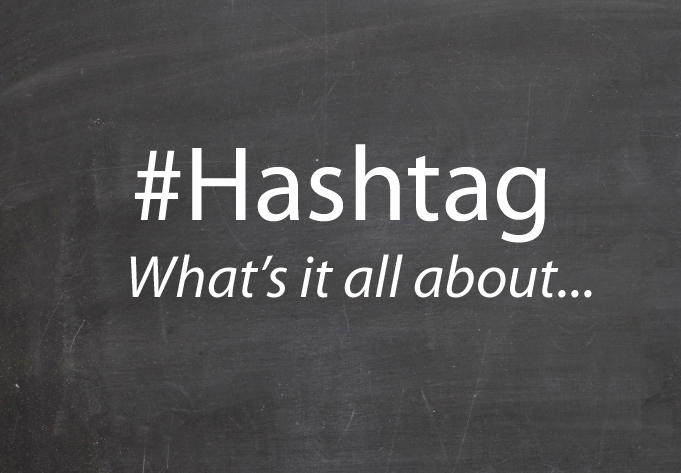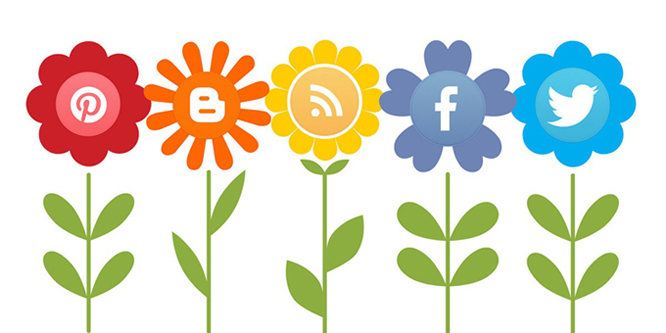If you’re new to social media, hashtags – short links or words that follow the hash symbol (#) may seem confusing and pointless. But they are integral to the way we communicate online, and it’s useful to know how to use them properly.

On Twitter, the hash symbol turns any word or group of words that directly follow it into a searchable link. This enables content to be organised and discussion topics to be tracked based on those keywords. So, if you wanted to post about ‘website design in Chester’ you would include for example #webdesignchester in your tweet to join the conversation. You can click on on a hashtag to see all the posts that mention the subject in real time.
The hashtag popularity originated from Twitter but has extended to other social media platforms.
How hashtags works
What should you include in a #hashtag? For starters, spaces are an absolute no-no. Even if your hashtag contains more than one word, group them all together. If you want to differentiate between words, use capitals instead (#WebsiteDesignChester). Uppercase letters will not alter your search results, so searching for #WebsiteDesignChester will reveal the same results as #websitedesignchester.
Numbers are supported, so #Top10Websites is fine. However, punctuation marks are not, so commas, fullstops, exclamation marks, question marks and apostrophes are out. Or any other special characters for that matter.
Bear in mind that the @ symbol does something completely different, on Twitter this is used before a person’s Twitter name to let them know you are directing a message to them or mentioning them within a tweet. Remember if you are trying to speak directly to someone using a hashtag before their Twitter name will not work.
There is no approved list of hashtags that you must use, simply choose your desired word and there you go. You never know you may invent a new hashtag in the process.
Supported hashtag platforms

The majority of social media platforms now support hashtags. These include:
Twitter: Twitter is the birthplace of modern hashtag usage. Twitter hashtags are mainly used to highlight specific topics of conversation; the “Trends” sidebar of your Twitter feed complies a list of hashtags you might be interested in, based on your tweets.
Facebook: In June 2013 Facebook added hashtag support, however it doesn’t seem to have taken off so rapidly. That said, when you click on Facebook hashtags it will take you to a list of posts containing the same hashtag. The results are not restricted to people you know.
Instagram: Hashtags can be used to complement photos shared on Instagram and to help you find new accounts and gain followers. Some hashtags were created specifically for Instagram photo challenges for example #ThrowbackThursday, to encourages users to post retro photos.
Google+: When you click on a hashtag in Google+, the search results will include the original hashtag as well as posts with similar tags and keywords. Google search results are displayed on the left of the page, while hashtag results from within Google+ appear on the right. Google also gives you the option to search within Twitter and Facebook.
Pinterest: You can use Pinterest hashtags to mark and search for content. Click on the hashtag in a pin description to navigate results that contain the exact hashtag, plus pins with the same word or phrase in the description.
If you are keen to know which hashtags are trending across social media visit Hastags.org to tell which tags are hot in real time.
Why use hashtags
Aside from a means of simply organising your tweets, Twitter hashtags are often used to add humour and personality to your 140 characters.
Sometimes hashtags can be so specific that there aren’t likely to be any search results attached to it. These exist purely for entertainment value. For example: “#Iwouldrathereatmyownhead”. It’s unlikely anyone would actually search for #Iwouldrathereatmyownhead, but it adds some comedy value that followers appreciate.
Hashtag best practices
Twitter has a helpful list of best practices for using hashtags, but here are three key points to consider:
Be specific: If you’re using a hashtag to join a conversation, make sure the hashtag is specific and relevant to your topic. If you’re talking about website in design in Chester, use #WebdesignChester instead of simply #Webdesign. A vague or generic hashtag like #happy or #decision isn’t effective either.
Keep it simple: Hashtags, as with links, look like spam if they are used too frequently. Three hashtags should be the maximum on Twitter and Facebook, but you can get away with more hashtags on Instagram.
Provide content: A tweet that contains only hashtags is not only confusing — it’s boring. If your tweet simply reads, “#impressed,” your followers will have no idea what you’re talking about. Similarly, if you tweet, “#chocolate is #brilliant,” you’re not really adding much to the conversation.
We hope this has helped to give you a better understanding into the wonderful world of hashtags!
Now go and start hashtagging like a pro #GoodLuck





